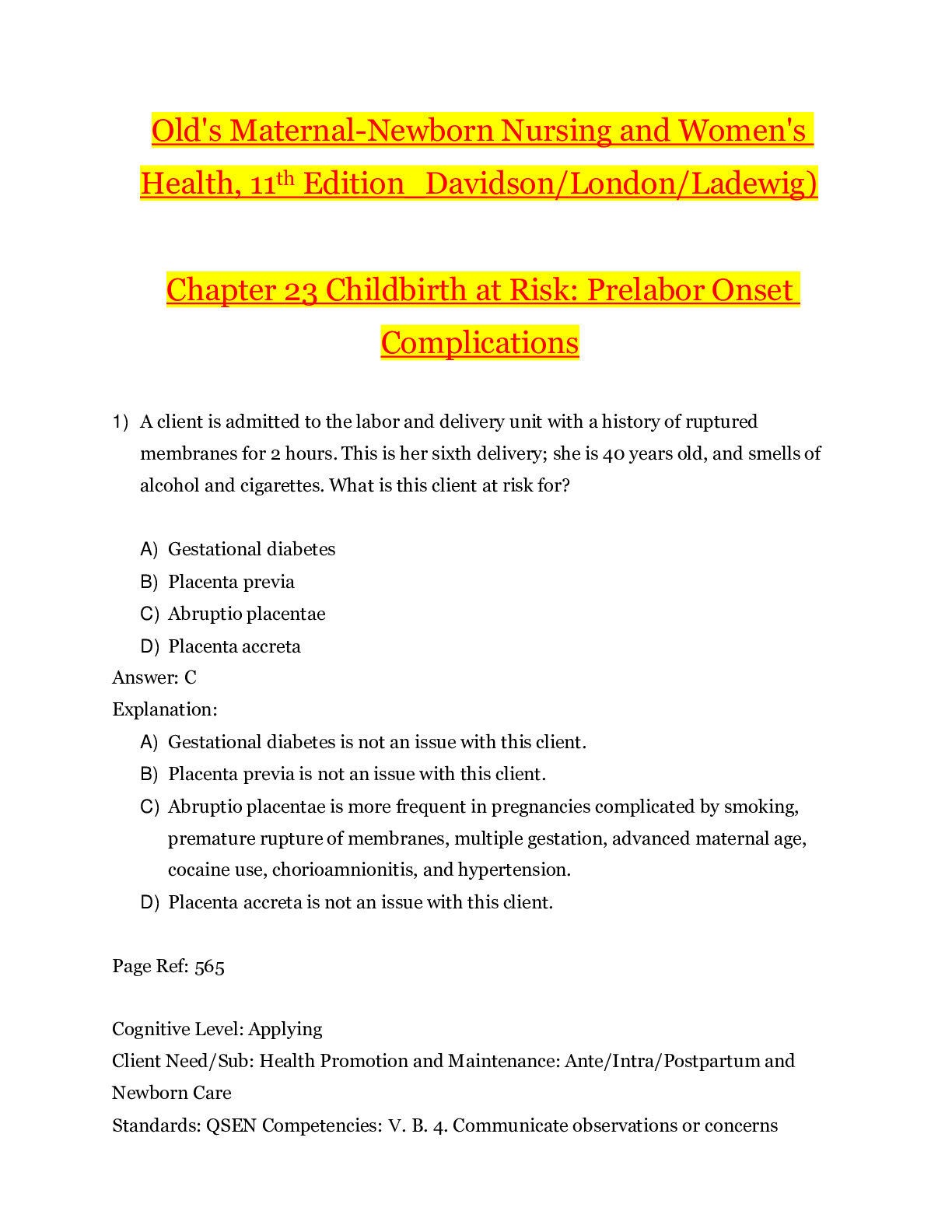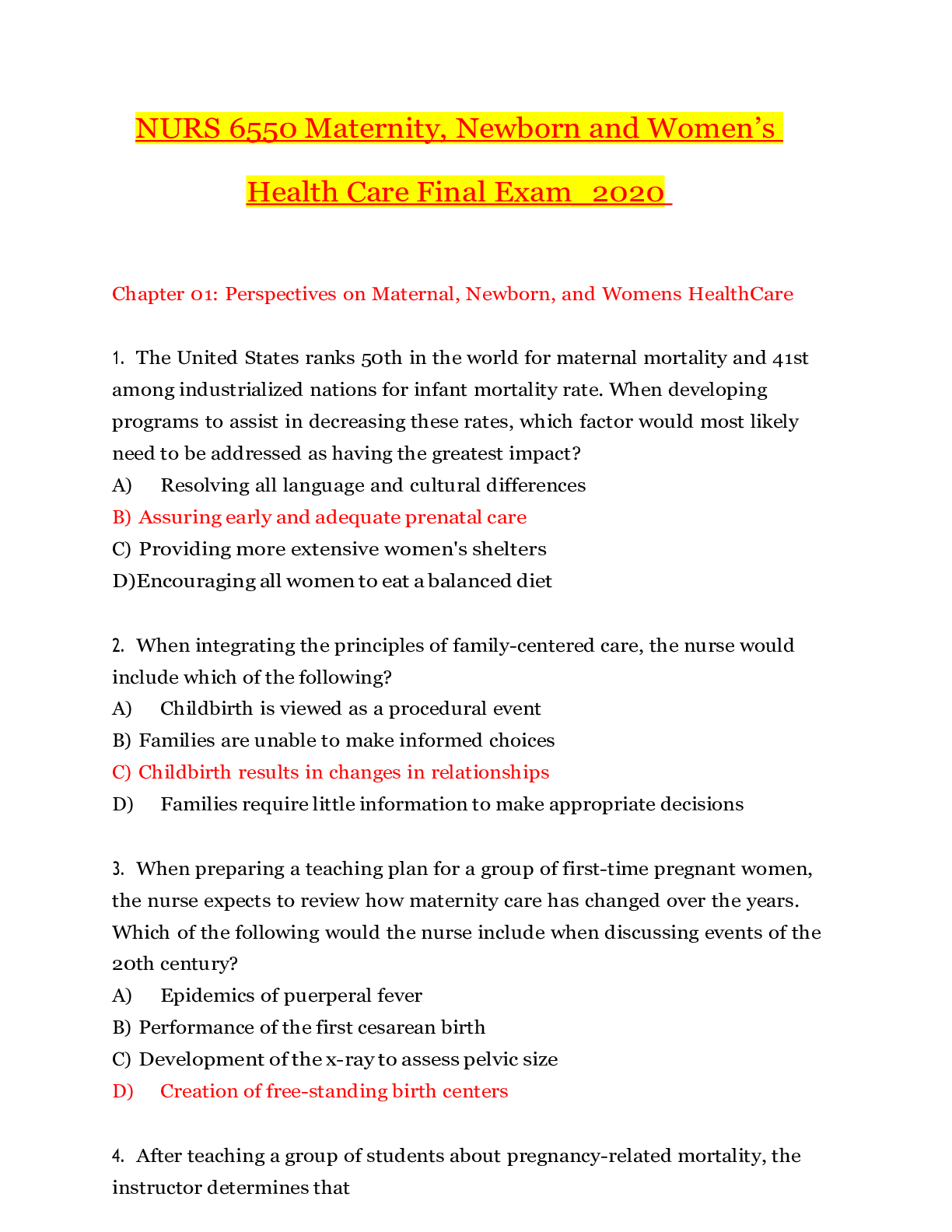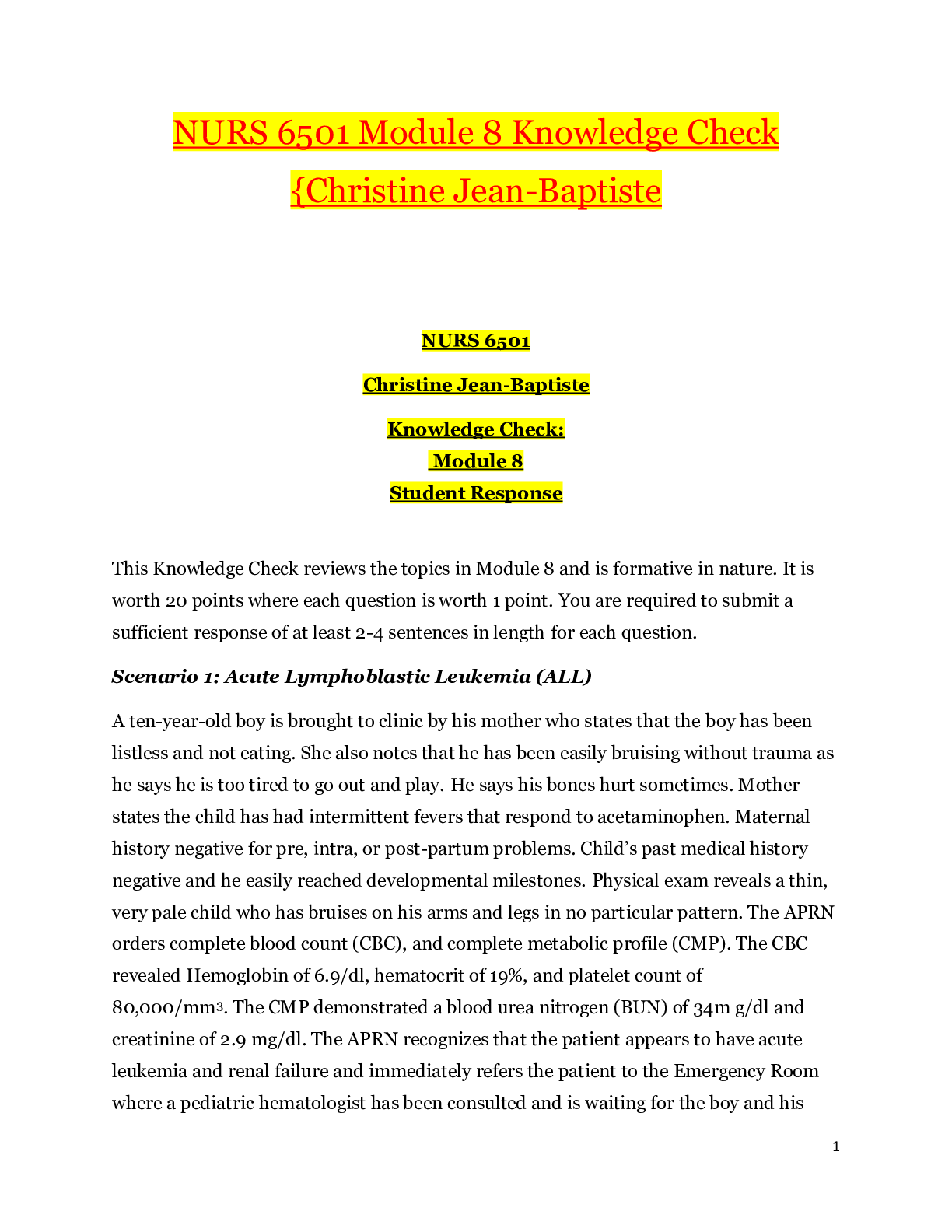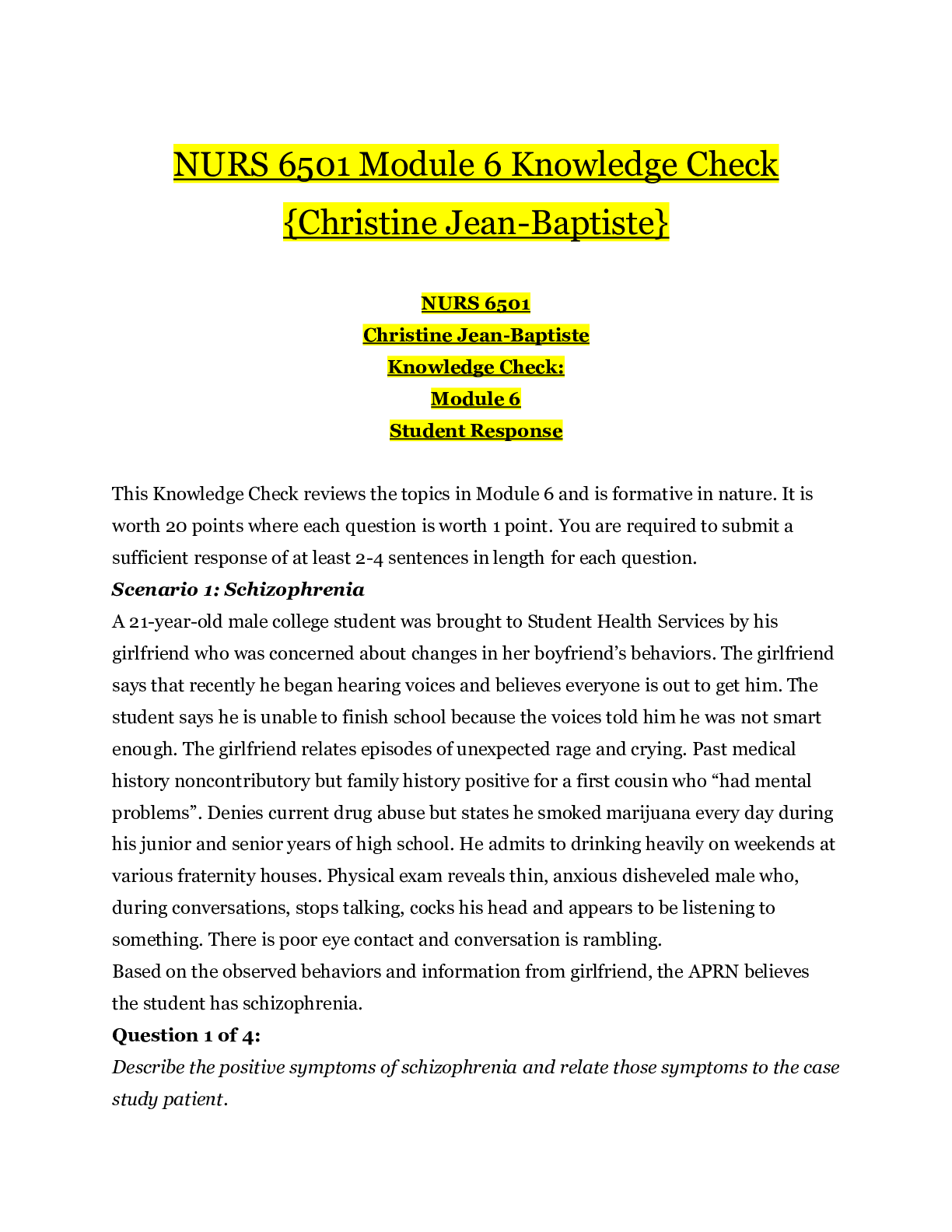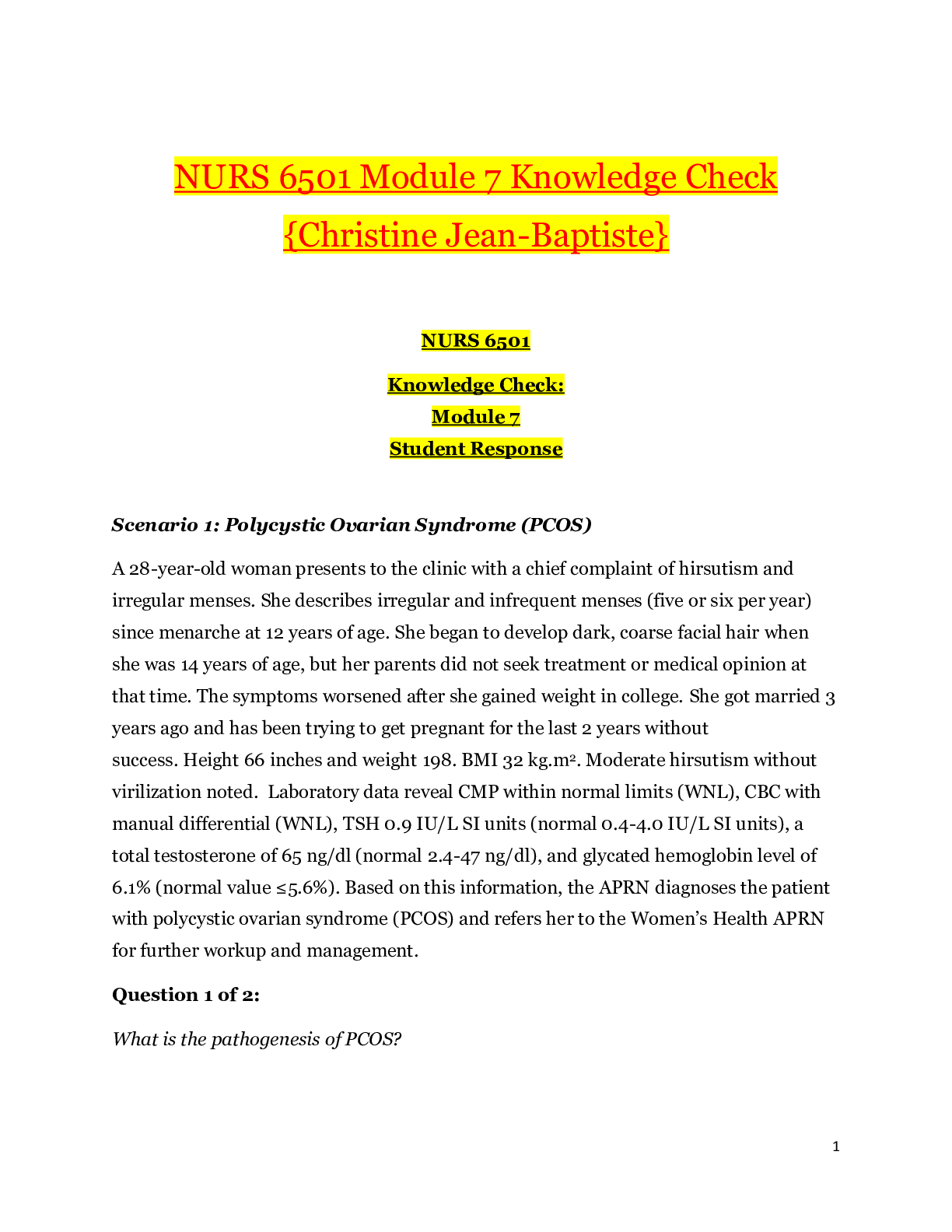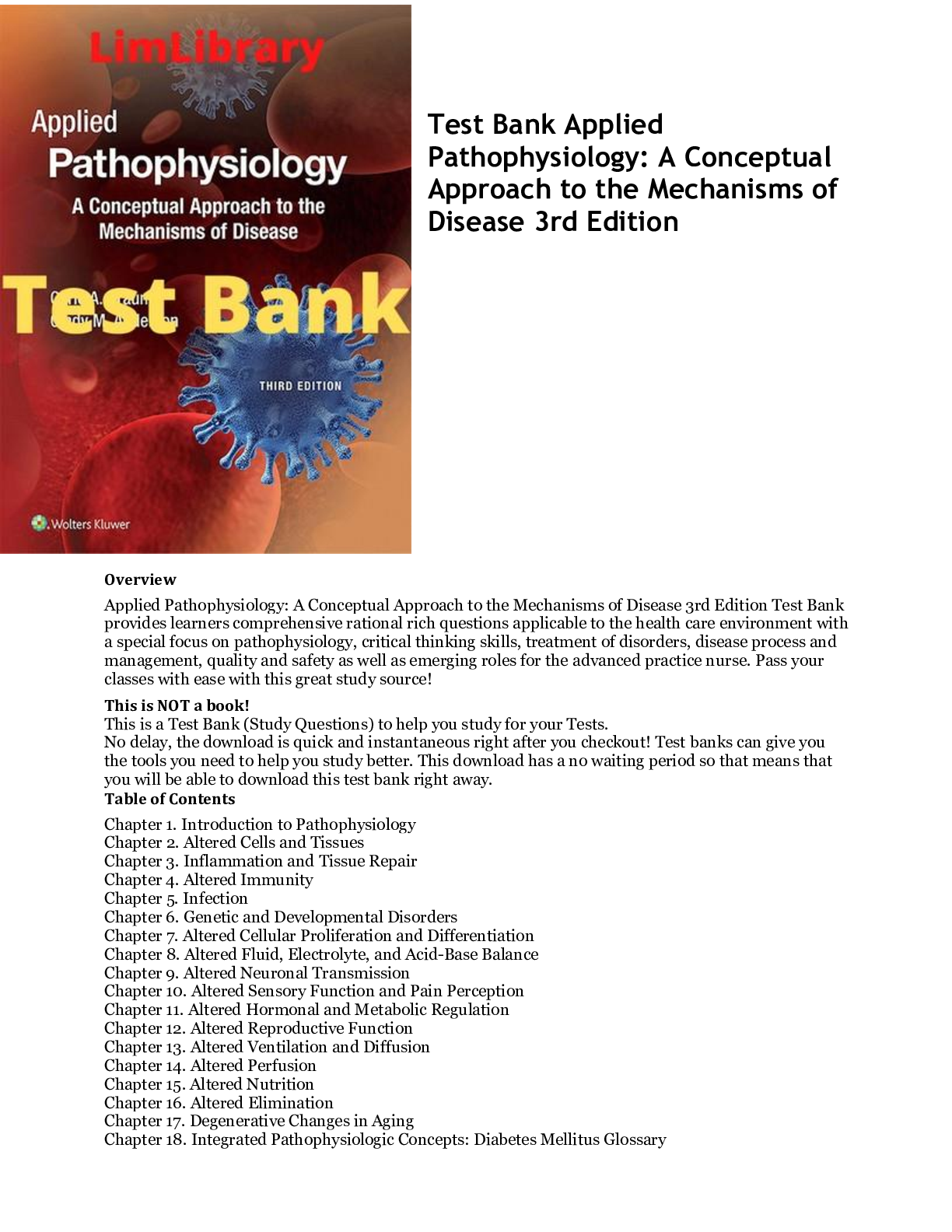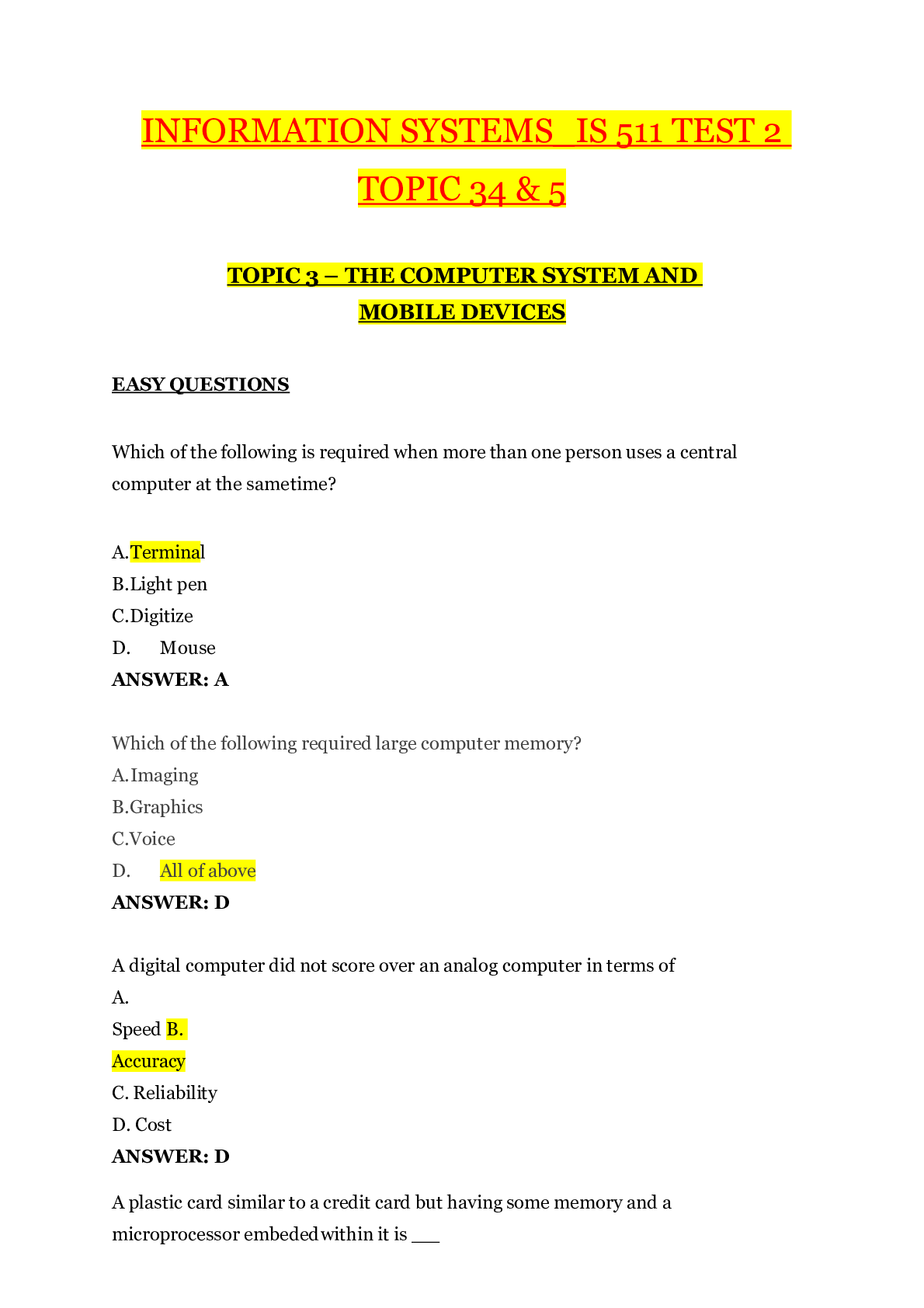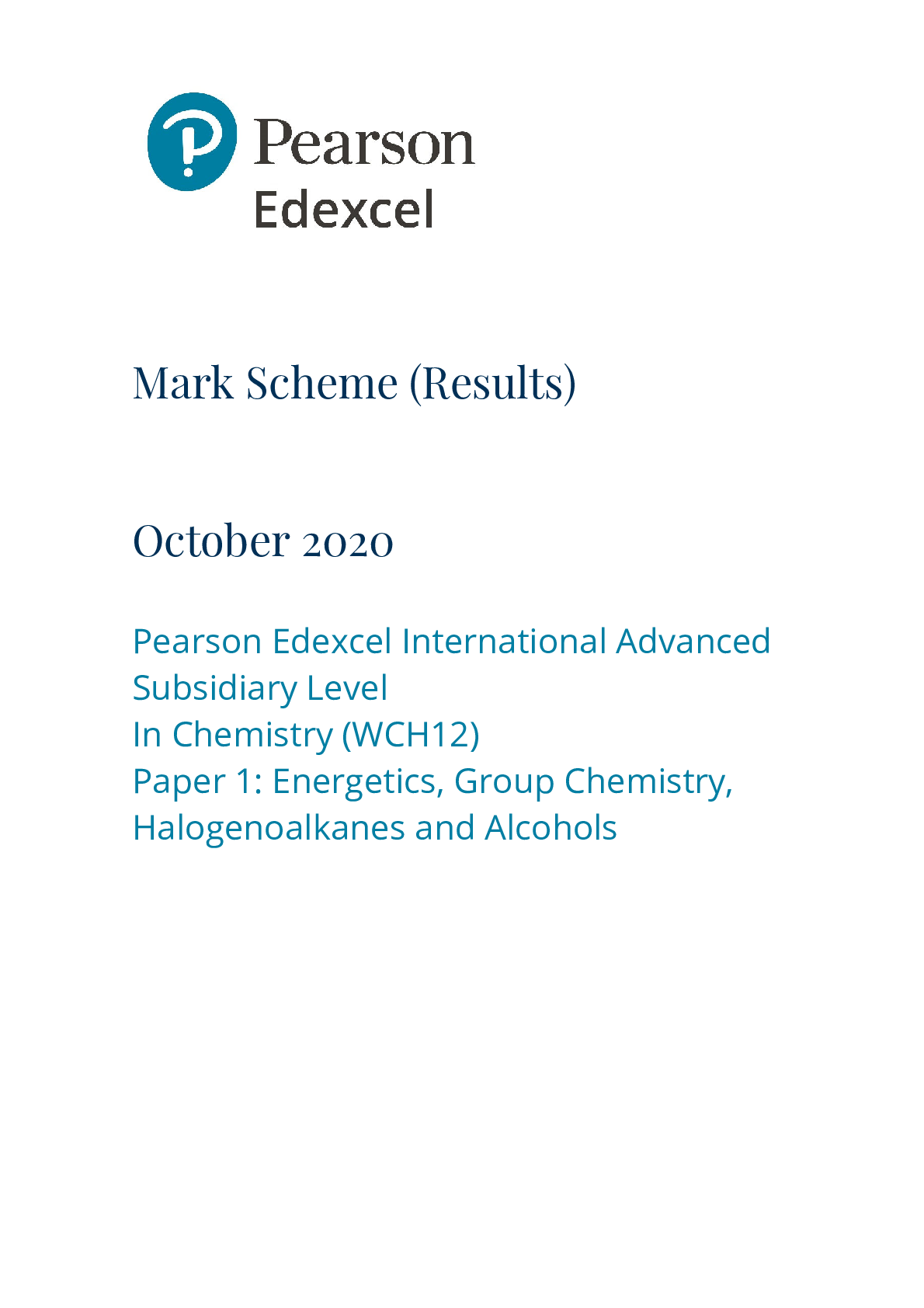Chemistry > EXAM > Edexcel A Level Chemistry {WCH12} Paper 1_2020 | Unit 2: Energetics, Group Chemistry, Halogenoalkane (All)
Edexcel A Level Chemistry {WCH12} Paper 1_2020 | Unit 2: Energetics, Group Chemistry, Halogenoalkanes and Alcohols
Document Content and Description Below
Pearson Edexcel International Advanced Level Centre Number Candidate Number Candidates must have: Scientific calculator Total Marks Data Booklet Ruler Chemistry International Advanced Subsidia... ry/Advanced Level Unit 2: Energetics, Group Chemistry, Halogenoalkanes and Alcohols Morning (Time: 1 hour 30 minutes) Paper Reference WCH12/01 Thursday 16 January 2020 Candidate surname Please check the examination details below before entering your candidate information Other names2 DO NOT WRITE IN THIS AREA DO NOT WRITE IN THIS AREA DO NOT WRITE IN THIS AREA *P60464A0228* SECTION A Answer ALL the questions in this section. You should aim to spend no more than 20 minutes on this section. For each question, select one answer from A to D and put a cross in the box . If you change your mind, put a line through the box and then mark your new answer with a cross . 1 Which equation represents the standard enthalpy change of formation, ǻfH 9, of hydrogen iodide? A H(g) + I(g) → HI(g) B H2(g) + I2(s) → 2HI(g) C ½H2(g) + ½I2(g) → HI(g) D ½H2(g) + ½I2(s) → HI(g) (Total for Question 1 = 1 mark) 2 When 50 cm3 of hydrochloric acid of concentration 2.0 mol dm−3 is added to 50 cm3 of sodium hydroxide solution of concentration 2.0 mol dm−3, the temperature increase is 13.0qC. HCl(aq) + NaOH(aq) NaCl(aq) + H2O(l) The experiment is repeated using 25 cm3 of the same hydrochloric acid and 50 cm3 of the same sodium hydroxide solution. What is the temperature increase? A 4.9qC B 6.5qC C 8.7qC D 13.0qC (Total for Question 2 = 1 mark) Use this space for any rough working. Anything you write in this space will gain no credit.3 Turn over DO NOT WRITE IN THIS AREA DO NOT WRITE IN THIS AREA DO NOT WRITE IN THIS AREA *P60464A0328* 3 Nitrogen reacts with hydrogen to form ammonia. N2(g) + 3H2(g) U 2NH3(g) ǻrH = −92 kJ mol−1 Bond Bond energy / kJ mol−1 N N 945 H H 436 What is the mean bond energy, in kJ mol−1, for the N H bond? A 246 B 360 C 376 D 391 (Total for Question 3 = 1 mark) 4 How many moles of CO2 are formed when 3.0 mol of chloroethene, C2H3Cl, is mixed with 10.0 mol of oxygen and react as shown? 2C2H3Cl + 5O2 → 4CO2 + 2H2O + 2HCl A 3.0 B 4.0 C 6.0 D 8.0 (Total for Question 4 = 1 mark) 5 Which compounds are arranged in order of decreasing boiling temperature? A CH3CH2CH2CH3 > CH3CH2CH2CH2CH3 > CH3CH2CH2CH2CH2CH3 B CH3CH2CH2CH2CH2CH3 > (CH3)2CHCH2CH2CH3 > (CH3)3CCH2CH3 C CH3CH2CH2OH > CH3CHOHCH2OH > CH2OHCHOHCH2OH D CH3Cl > CH3Br > CH3I (Total for Question 5 = 1 mark)4 DO NOT WRITE IN THIS AREA DO NOT WRITE IN THIS AREA DO NOT WRITE IN THIS AREA *P60464A0428* 6 Chlorine is added to 2 cm3 of a dilute solution of potassium iodide. The equation for the reaction between chlorine and iodide ions is Cl2(aq) + 2I−(aq) → I2(aq) + 2Cl−(aq) (a) Which statement is correct? (1) A iodide ions oxidise chlorine B iodide ions reduce chlorine C chlorine reduces iodide ions D chlorine is neither oxidised nor reduced (b) When the reaction is complete, 10 cm3 of cyclohexane (density = 0.79 g cm−3) is added. The mixture is shaken and left to settle into two layers. Which description of one of these layers is correct? (1) A the upper layer is purple B the lower layer is purple C the upper layer is brown D the lower layer is brown (Total for Question 6 = 2 marks) 7 Going from calcium to barium in Group 2, which property changes as stated? A ionic radius decreases B first ionisation energy decreases C melting temperature increases D reactivity with water decreases (Total for Question 7 = 1 mark) Use this space for any rough working. Anything you write in this space will gain no credit.5 Turn over DO NOT WRITE IN THIS AREA DO NOT WRITE IN THIS AREA DO NOT WRITE IN THIS AREA *P60464A0528* 8 The properties of Group 2 compounds change down the group from magnesium to barium. Which statement is correct? A solubility of Group 2 sulfates increases B solubility of Group 2 hydroxides decreases C thermal stability of Group 2 nitrates increases D thermal stability of Group 2 carbonates decreases (Total for Question 8 = 1 mark) 9 Iodine reacts with hot sodium hydroxide solution. a NaOH(aq) + b I2(aq) → c NaI(aq) + d NaIO3(aq) + e H2O(l) What are the coefficients (a, b, c, d and e) needed to balance this equation? a b c d e A 2 1 1 1 1 B 4 2 3 1 2 C 4 1 3 1 1 D 6 3 5 1 3 (Total for Question 9 = 1 mark) Use this space for any rough working. Anything you write in this space will gain no credit.6 DO NOT WRITE IN THIS AREA DO NOT WRITE IN THIS AREA DO NOT WRITE IN THIS AREA *P60464A0628* 10 Aqueous sodium iodide reacts with aqueous silver nitrate to form a precipitate of silver iodide. NaI(aq) + AgNO3(aq) → NaNO3(aq) + AgI(s) M r values: 149.9 169.9 85.0 234.8 (a) Which is correct for silver iodide? [Show More]
Last updated: 1 year ago
Preview 1 out of 28 pages
Instant download
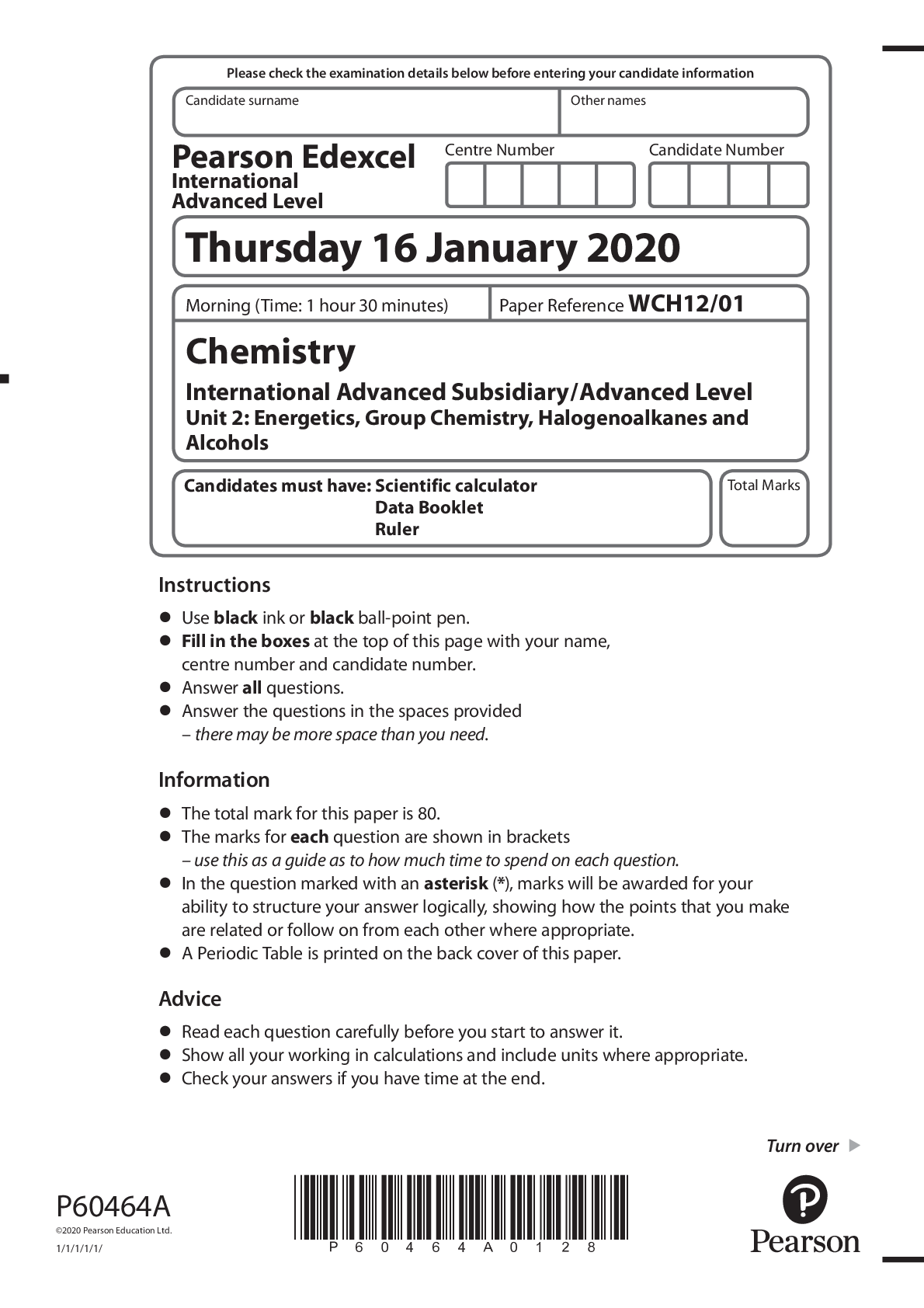
Buy this document to get the full access instantly
Instant Download Access after purchase
Add to cartInstant download
Reviews( 0 )
Document information
Connected school, study & course
About the document
Uploaded On
May 20, 2021
Number of pages
28
Written in
Additional information
This document has been written for:
Uploaded
May 20, 2021
Downloads
0
Views
211

.png)


